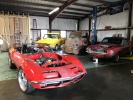nice I didnt know you could cut logs... huge help. Thanks
Regarding the logging rate... for example I log my RV GM 8.1 workhorse on 1-3hr trips, Im not sure I will be able to do that with 3.0 due to the large file size... any way I can slow that logging rate down? It would be a nice feature for long trips.




 Reply With Quote
Reply With Quote



